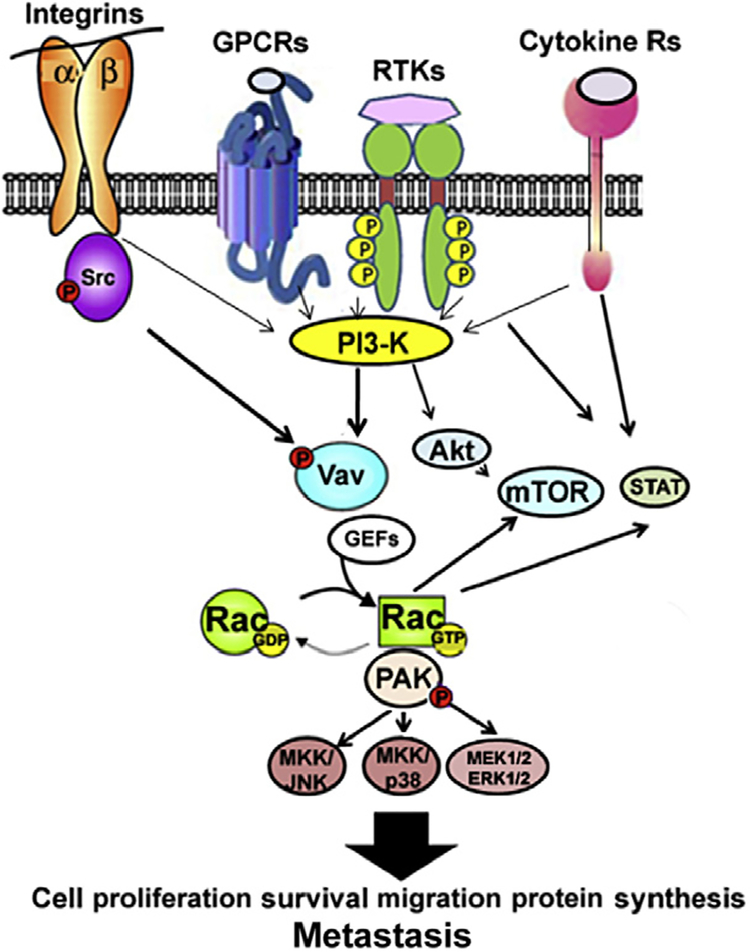Figure 6.1.
Simplified scheme of the major signaling pathways of Rac activation in human cancer. Cell surface integrin receptors, G protein coupled receptors (GPCR), receptor tyrosine kinases (RTK), cytokine receptors, and nonreceptor tyrosine kinases activate Ras/mitogen activated protein kinase (MAPK), phosphoinositide 3-kinases (PI3-K), and signal transducers and activator of transcription (STAT) pathways. PI3-K phosphorylates phosphatidyl inositol biphosphate (PIP2) to form the signaling intermediate PIP3 that recruits phospholipid-dependent kinase and Akt/protein kinase B. Akt activates the mammalian target of rapamycin (mTOR), a central regulator of protein synthesis and metabolism. PI3-K signaling also modulates Vav and other Rac.GEFs such as p-REX that exchange the GDP on Rac for GTP, thus activating Rac. Rac action is implicated with signaling to PAK, mTOR complex1 (mTORC1), mTORC2, MAPKs: extracellular regulated kinases (ERK1/2), p38 MAPK, Jun kinase (JNK), and STATs to control cancer progression to metastasis.

